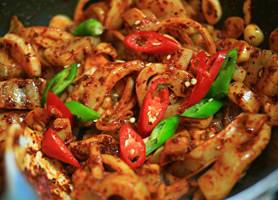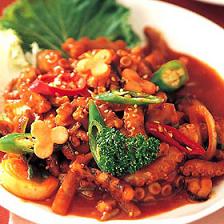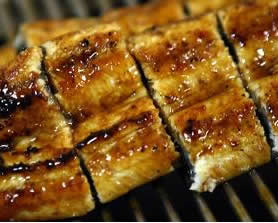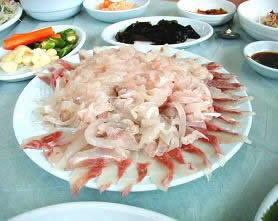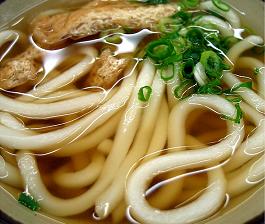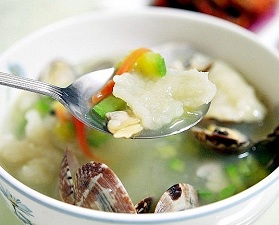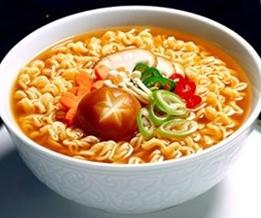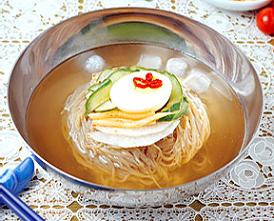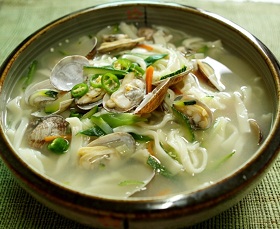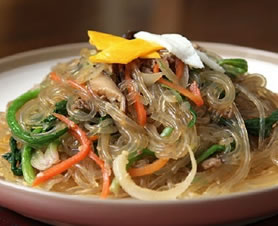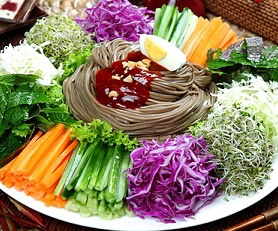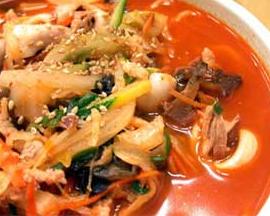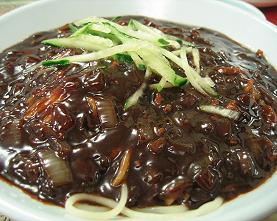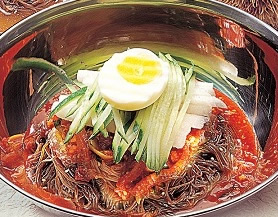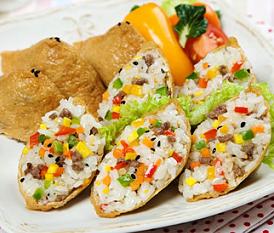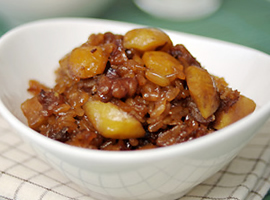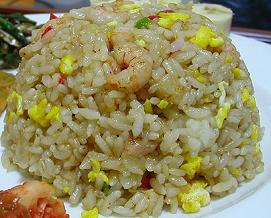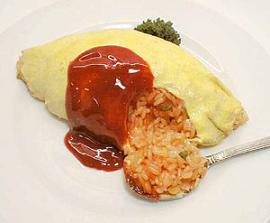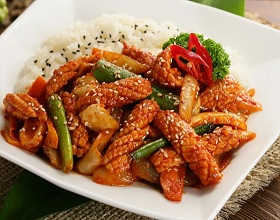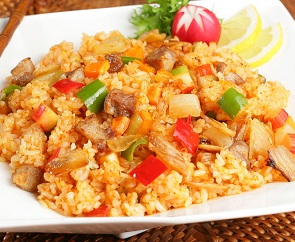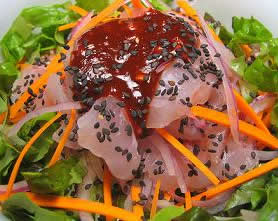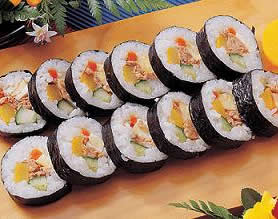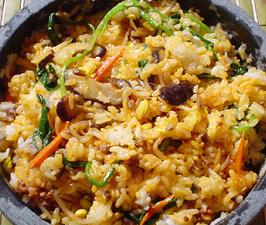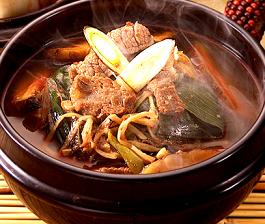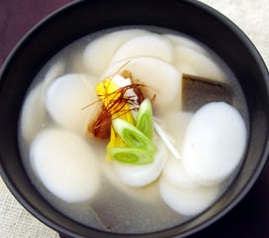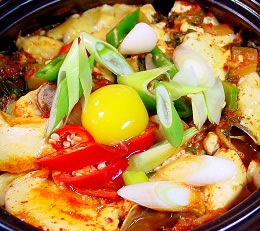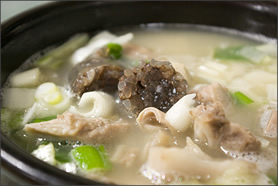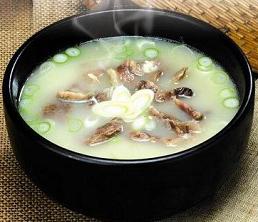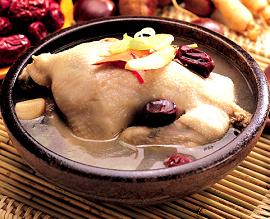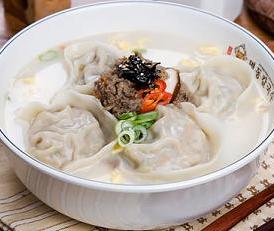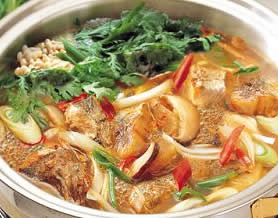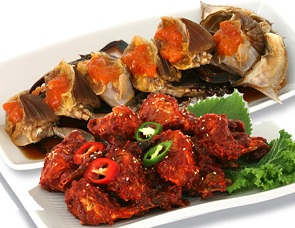
Yangnyum or ganjang gaejang is a Korean seafood cuisine which is made by marinating fresh raw crabs either in soy sauce or in
gochujang (hot pepper paste). The term consists of the two words;
gae, meaning crab, and
jang
which means condiment in Korean. Although gaejang originally referred
only to crabs marinated in soy sauce, it has begun to be called ganjang
gaejang these days to differentiate it from yangnyum gaejang.
To prepare, crabs are first
thoroughly cleaned using a brush while submerged in a bowl of cold water
and then rinsed thoroughly to remove the excess fishy smell. For its
sauce, a mixture of soy sauce is boiled briefly along with sesame oil,
lemon, sugar, finely sliced scallions, minced garlic, ginger, and finely
shredded chili peppers. The hot soy sauce is poured onto the crabs in
a large bowl and then cooled -- this step may be repeated multiple
times by draining, re-boiling and re-pouring the sauce sauce content to
enhance its flavor.
As for yangnyum gaejang, raw crabs are marinated
with a mixture of gochujang sauce, ground Korean pear, onions, ginger
and garlic, sesame seeds, and sesame oil. For optimal taste, marination
should be for half a day to 3 full days to have its spicy, sweet and
sour taste get fully intact to crab meat.
Fact: Jeju Island is famous for their own signature gaejang dish.

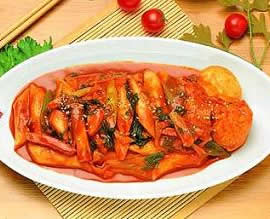
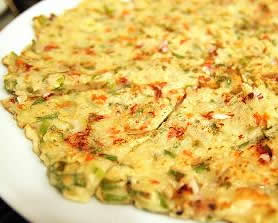
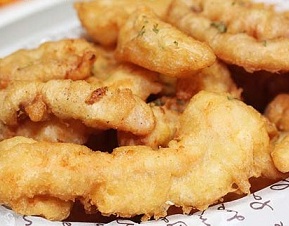
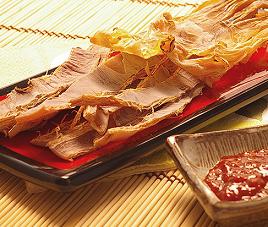
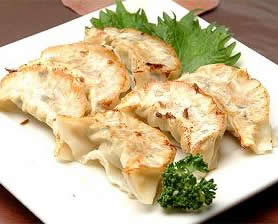
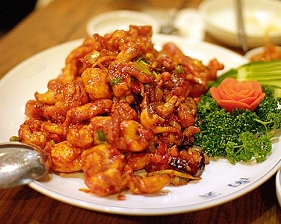 Kangpoong saewoo is another popular appetizer enjoyed by Asians at Korean/Chinese restaurants much like
Kangpoong saewoo is another popular appetizer enjoyed by Asians at Korean/Chinese restaurants much like 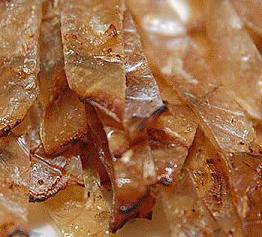
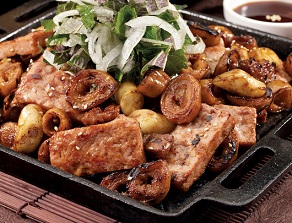 Gopchang bokkum or gui is a stir-fried or grilled intestines (from
cattle or pork) delicacy enjoyed by Koreans especially while drinking
Gopchang bokkum or gui is a stir-fried or grilled intestines (from
cattle or pork) delicacy enjoyed by Koreans especially while drinking 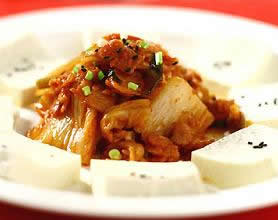
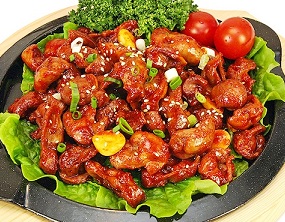 Dakdongjib is a very popular dish while drinking Korea's iconic alcohol
Dakdongjib is a very popular dish while drinking Korea's iconic alcohol 